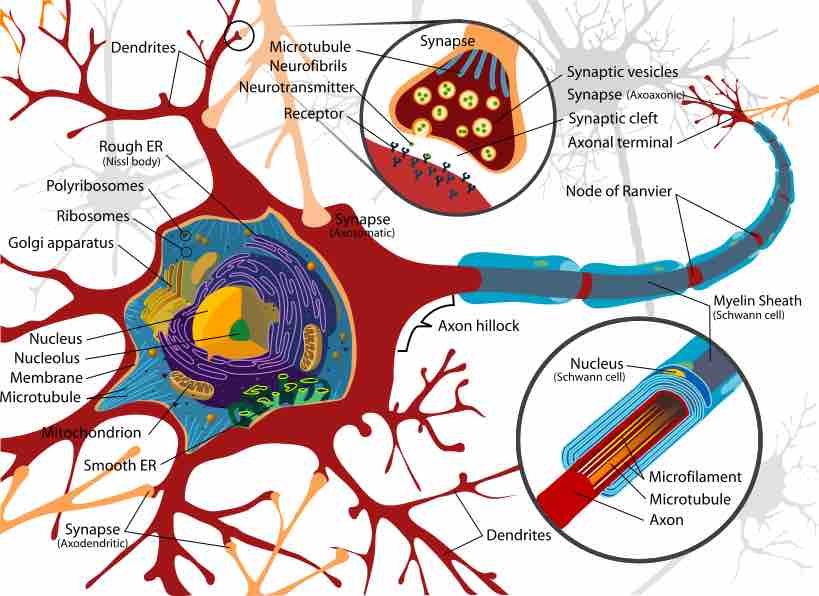Electric potentials are not limited in function to inorganic processes. In fact, they can be commonly seen in living organisms. In humans, they are seen in cell membranes and nerve impulses in particular.
Cell Membranes
Cell membranes are only semipermeable; water can freely travel in and out, but ions can be selectively admitted passage across them. As a result, a cell can contain a concentration of a given ion that differs from that which exists outside. Thus, a potential, called the resting potential, is created on either side of the membrane.
Typical ions used to generate resting potential include potassium, chloride, and bicarbonate.
Resting membrane potential is approximately -95 mV in skeletal muscle cells, -60 mV in smooth muscle cells, -80 to -90 mV in astroglia, and -60 to -70 mV in neurons.
Potentials can change as ions move across the cell membrane. This can occur passively, as ions diffuse through ion channels in the membrane. No energy is required for this to occur, and therefore ions can only move from areas of higher concentration to those of lower concentration.
Active transport of ions across a cell membrane is also a possibility. This involves ion pumps using energy to push an ion from an area of lower concentration to one of higher concentration.
Nerve Impulses
When the brain decides on an action, it sends an impulse that cascades to the extremity where a muscle contracts.
Neurons receive an impulse at the dendrites. This impulse is passed through the axon, a long extension of the cell, in the form of an electrical potential created by differing concentrations of sodium and potassium ions on either side of a membrane in the axon .

The Neuron
Neurons receive an impulse at the dendrites. This impulse is passed through the axon, a long extension of the cell, in the form of an electrical potential created by differing concentrations of sodium and potassium ions on either side of a membrane in the axon.
When the signal reaches the end of the axon, neurotransmitters are released, which then are received by the dendrites of the next neuron. The next neuron repeats the process outlined above.